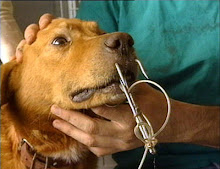Snakes in the Grass Can Be Fatal to Dogs
Now that it is spring, pet owners will be taking their dogs outside more for walks, hiking, and camping. While fun is anticipated, pet owners should be cautious about their animals' safety, as snakes may pose a danger to dogs and humans.
About 90 percent of snakebites occur between April and October throughout the U.S. During summer months, snakes show increased aggression and venom yield. The majority of snakebite deaths to humans and animals are caused by rattlesnakes – the only poisonous snake native to California.
The U.S. has four types of venomous snakes: rattlesnake, copperhead, cottonmouth or water moccasin, and coral. Rattlesnakes are found across the U.S., while coral snakes are found primarily in Arizona, Texas, and Florida. Copperheads and water moccasins are found in Eastern and Central U.S., and their bites are the most common due to their proclivity for living near humans, according to Dr. Karl Jandrey, assistant professor at the University of California, Davis School of Veterinary Medicine.
"Americans love the outdoors; we have many lakes, rivers, parks, and wilderness areas to enjoy. Just remember to take care of your dog's safety when having fun," says Mark Nunez, DVM, president of the California Veterinary Medical Association. "Taking extra precautions can make all the difference."
Avoiding snake habitat is the best way to prevent your dog from being bitten by a snake. Keeping a dog leashed and under control at all times during walks and hikes may prevent perilous encounters with venomous snakes.
Should your dog get bitten by a snake, walk − do not run − away from it. Do not attempt to kill the snake, but make a note of what it looks like, if possible. Veterinarians know of their local population of venomous snakes, and identification is not always essential. Immediately make your way to the nearest veterinarian. Do not give your dog any over-the-counter medications, and avoid ice, hot/cold packs, sprays, incisions, suctioning, and tourniquets. The signs and symptoms that develop often will guide your veterinarian to the appropriate therapy.
The California Veterinary Medical Association is the largest state veterinary medical association in the United States, with more than 6,000 members. For more information, visit www.cvma.net.
Thursday, May 20, 2010
Subscribe to:
Post Comments (Atom)

















No comments:
Post a Comment